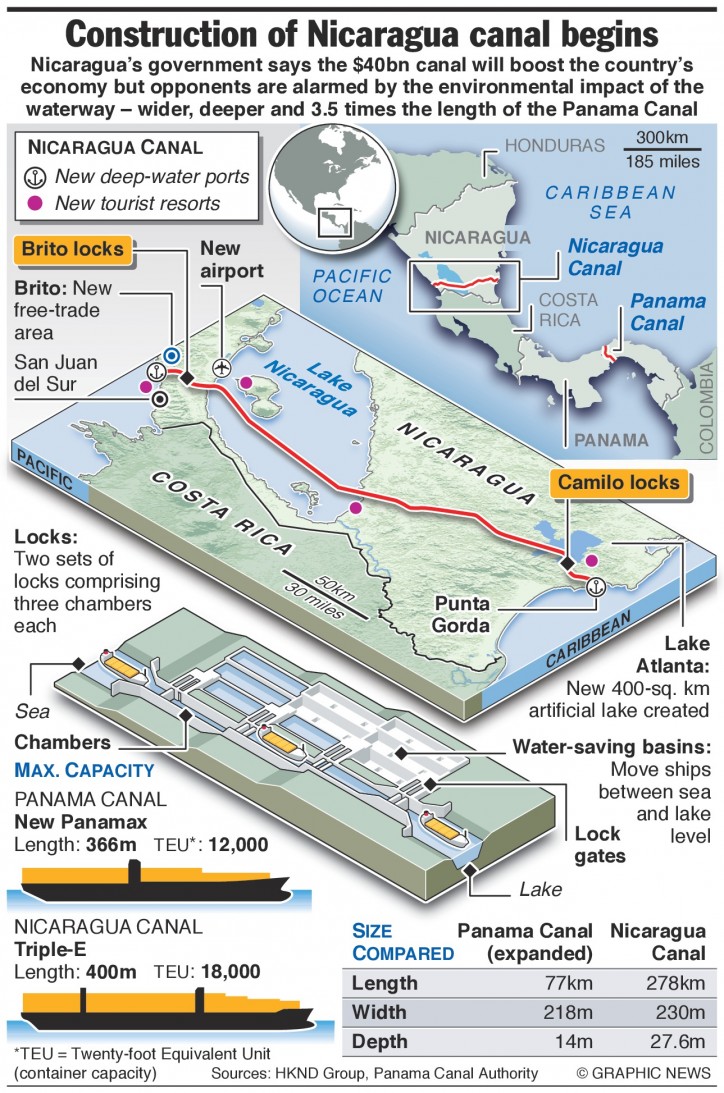Several international scientists have formed a group that has released its findings regarding a proposed trans-isthmus Nicaragua shipping canal, causing quite the rise of concern about eco impact aspects and lack of proper data and information.
The project would be carried out by Nicaragua’s government alongside Hong Kong Nicaragua Canal Development Company (HKND) and would have a greater capacity and larger size than the Panama Canal.
HKND hired the Environmental Resources Management (ERM) consultant company for the carrying out of the environmental assessment report.
In the Florida International University (FIU) scientists’ report it is pointed out that the ERM assessment doesn’t do a proper job in adequately measuring the project’s potential impacts, noting the insufficient amount of data regarding geology, water quality, species, sediments, fisheries and erosion.
The scientists further point out that the study’s time span of two years is not long enough to properly evaluate the long-term impacts that come along with a large-scale infrastructure project of this type.
“When regarding a project of this scale and having so much at stake, it is rather mandatory that careful and detailed consideration takes place before initiating all other operations. The study was carried out far too fast to properly assess the potential risks that come along with the project,” commented Todd Crowl, workshop participant and FIU’s Southeast Environmental Research Center director.
A major concern regarding the project is the available water. Silty sediments are to become the subject of dredging procedures in Lake Nicaragua for the purposes of large shipping channels and the lake would provide water for operating the locks of the canal. Due to the strongly seasonal climate of Nicaragua, which is characterized by extreme events such as hurricanes and drought, the scientists have put up to question the water supplies’ availability.
In general, in their report the scientists formulate 15 aspects for potential eco concern, such as lack of long-term climate forecasts, deforestation, along with likely impacts regarding endangered animals and plants.